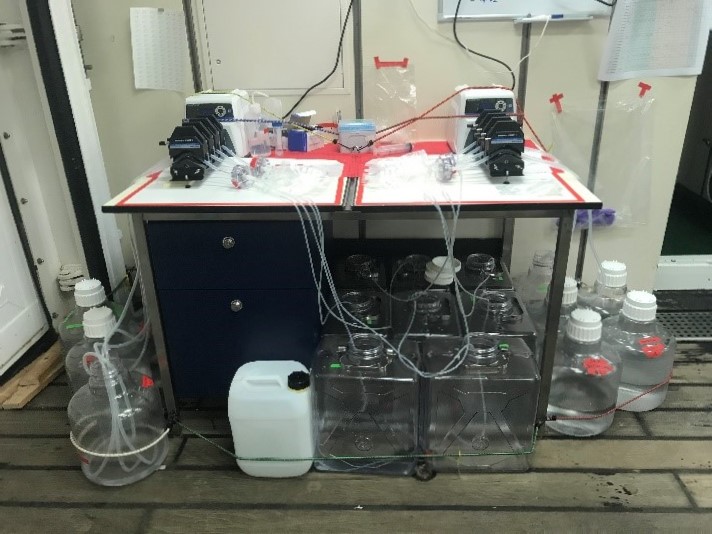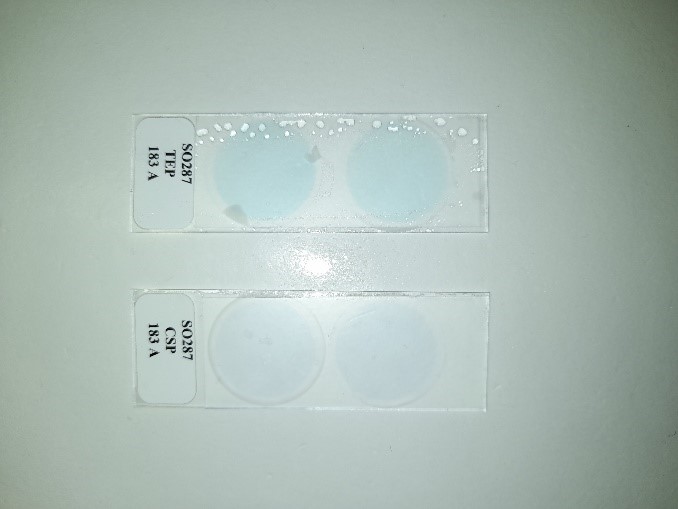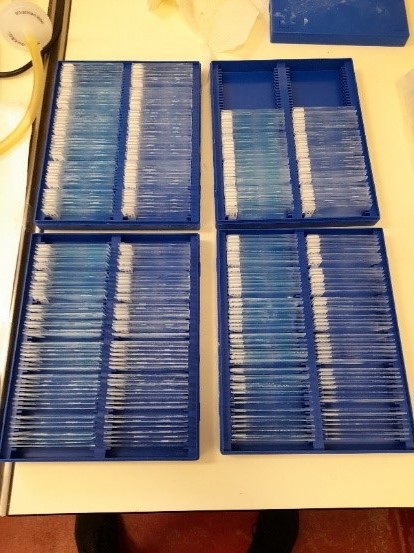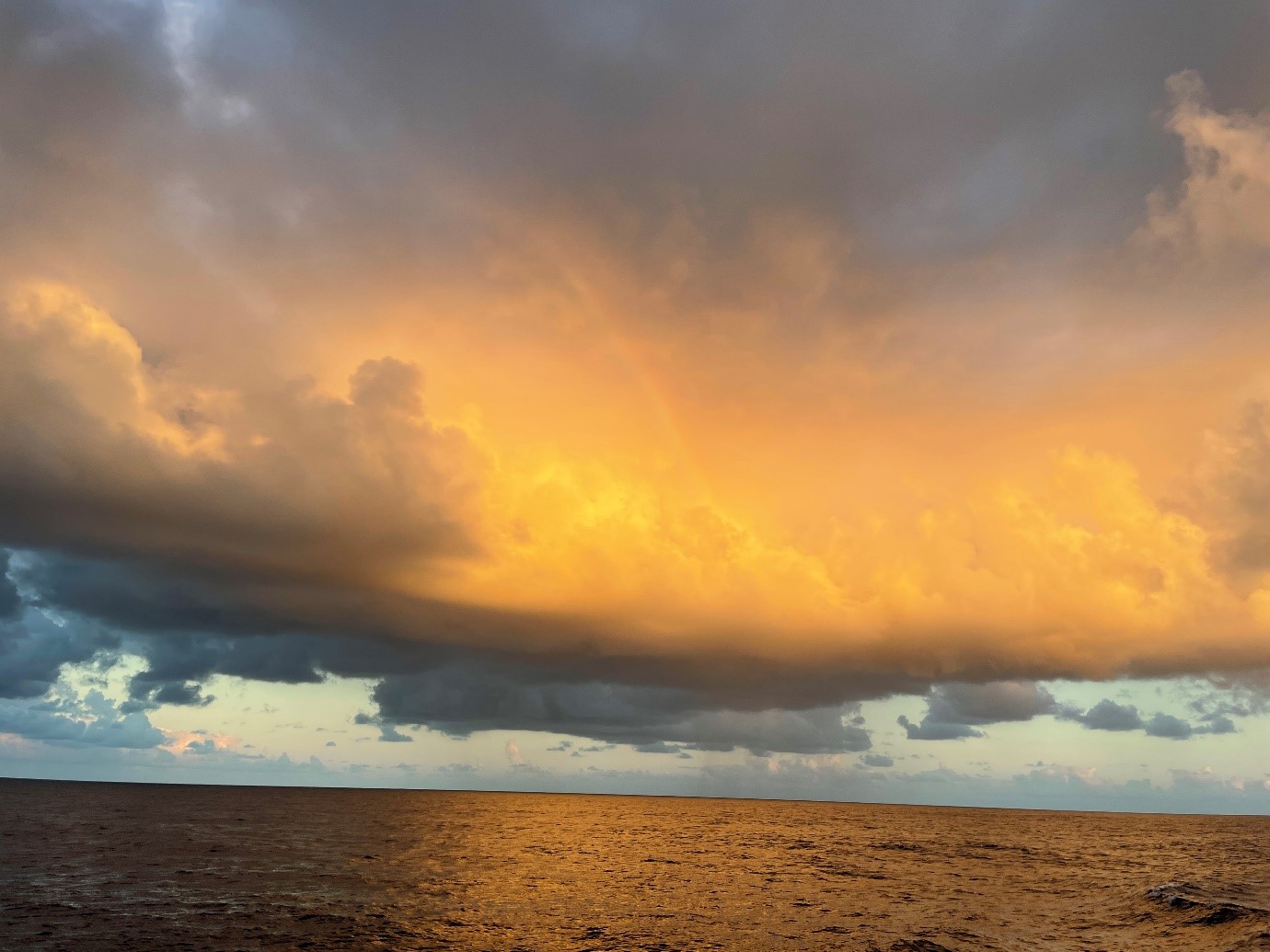The cruise is coming to an end, and there are 8 days left until we enter the port of Guayaquil. While some of the measurements on board can be read out directly and preliminary interpretations are presented during the cruise, there are also a lot of samples that can only be analyzed in the laboratory back in Germany. This requires great confidence in the method and a lot of planning in advance. On the ship, the tension rises noticeably to see whether the painstakingly collected samples correspond to our hypotheses. Some of the data that will only become available later this year are the bacterial community, particulate organic carbon, transparent exopolymer particles, particulate nutrients and lipids. All of these measurements are from filtrations performed here on board and require further complex methods, which is why the equipment needed for the analyses cannot be brought on the ship. It also means that our freezers here on board are loaded with conserved filters and they will be transported back to Europe at -80 °C in a special container. We want to use this post to present you a selection of the data that is not yet available, to create an outlook on why we are so excited for the final analysis back in Kiel.
Bacterial community analysis
At each of the 19 day stations, 64 liters of seawater from the upper 200 meters of the water column were filtered to a total of 380 filters. In addition, during each of the 17 night stations 16 liters were filtered through a total of 136 filters. The filters were shock frozen to -80 °C and are thus preserved until analysis in Kiel.
To determine the bacterial community in the upper water layers, the DNA is extracted from the filters and sent to another laboratory for sequencing, i.e. to determine detailed structure of the DNA. What comes back is a gigantic data set that has to be processed with the help of various algorithms. Each bacterial species differs in its DNA, and some of the sections in the genome are so essential that mutations in these areas are often deadly and therefor rarely passed on to the next generation. These sections are of special interest to us because they can be used to distinguish between different bacterial genera.

With the bacterial genera, conclusions can be drawn about the potential function of individual dominant genera on the basis of previous studies. Thus, we hope to gain insights into the role of known bacterial genera in carbon transport and degradation of organic matter in the North Equatorial Current from Gran Canaria (Eastern Tropical North Atlantic) to the Western Tropical North Atlantic.
TEP and CSP
Macrogel particles consist out of organic matter which forms up to larger aggregates. Transparent Exopolymeric Particles (TEP) and Coomassie Stainable Particles (CSP) are such macrogel particles, while TEP are mainly consisting out of sugars and CSP out of proteins. TEP is produced via photosynthesis of phytoplankton and CSP e.g. is excuded by zooplankton or produced by bacteria.
Dissolved organic matter (DOM) can form up to larger particles and when exceeding a certain scale it becomes part of the particulate organic carbon fraction (POC). TEP and CSP build a bridge between these two fractions of carbon compounds. Since those particles are relevant in carbon and nitrogen cycles in the ocean they are also of interest for the Sonne CONNECT cruise. Macrogel particles are inherently transparent. That’s why they need to be prepared with special staining solutions to make them visible for observation.
To determine the abundance of those gelparticles along the CONNECT transect a total of 932 filtrations were performed. To accomplish that, 560 liters of seawater were filtrated and prepared with staining solutions. Seawater samples were taken from 19 day stations in 6 different depths up to 1000 m and night stations in 7 different depths up to 3500 m. The obtained filters with the stained particles were then prepared on microscopy slides and frozen to -20°C. When arriving back in Germany those filters will be investigated under the light microscope and the amount of gel particles can be determined for all the different stations and depth.


CLSM investigation of TEP and CSP
Since macrogel particles like TEP and CSP consist out of sugars and proteins respectively they represent a habitat for microorganisms. To investigate the bacterial community on these particles further filtrations with filters of a smaller pore size were performed and the obtained filters again frozen to -20°C. Via a special staining method which will be performed in the laboratory in Germany the particles and the bacterial community can be observed under the confocal laser scanning microscope (CLSM). This method gives more information about the spatial structure of the particle aggregates and the bacterial population around them.
Wanja Böhme and Tobias Müller
